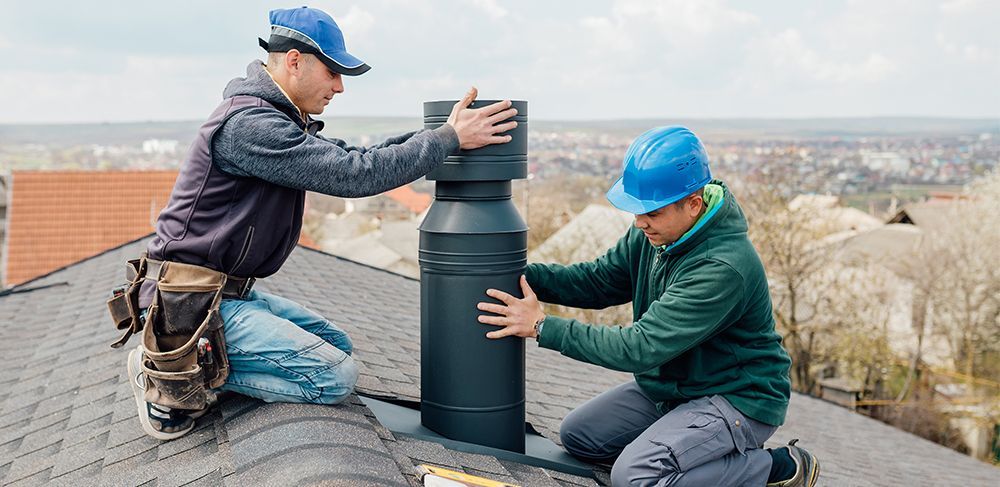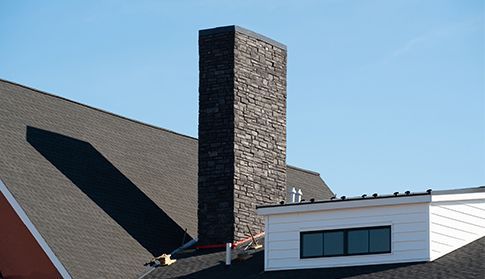Understanding Chimney Termination: Key Components and Maintenance Tips
Sitting by a warm and inviting fireplace on a chilly day is a cherished experience that adds charm and coziness to any home. However, neglecting the maintenance of your chimney can lead to severe hazards like fire and water damage, putting your family and property at risk. In this comprehensive guide, we'll delve into the potential issues that can arise with chimneys, the importance of regular chimney inspection and maintenance, and key practices to ensure your fireplace remains a safe and delightful home feature.

Common Chimney Problems and Hazards
Whether you have a metal or masonry chimney with a gas fireplace or woodburning fireplace, proper maintenance and inspections done by certified professionals are essential to guarantee safety. One common symptom that can arise with a lack of maintenance is poor chimney performance, indicated by difficulty starting or sustaining fires and inadequate heat distribution. This issue often arises from excessive soot and creosote buildup within the chimney liner, which can obstruct the damper and hinder the proper flow of air.
Chimney fires are a significant concern, often triggered by the accumulation of soot and creosote due to inadequate cleaning. To prevent chimney fires, it's recommended to have your chimney cleaned of any blockages and have an annual inspection performed by a chimney expert, or more frequently if your fireplace sees regular use.
Structural issues such as crumbling masonry, leaning chimneys, and cracked flue liners can also arise. These problems compromise the chimney's integrity and can lead to hazardous situations, including carbon monoxide leaks and potential damage to your home.
Chimney Maintenance Best Practices
To maintain a safe and efficient chimney, follow these essential best practices and chimney maintenance tips:
- Regular Professional Inspections and Cleaning
Enlist the expertise of a qualified chimney service professional to inspect and clean your chimney regularly. They can identify issues, recommend a chimney repair, and thoroughly clean to remove accumulated debris. - Proper Gear and Safety
When accessing the top of your chimney for inspections or maintenance, ensure you have the necessary safety equipment to prevent accidents. - Reducing Chimney Fire Risk
Consistent cleaning and inspections are the best way to mitigate the risk of chimney fires. The frequency of cleaning depends on usage and fuel type. Hardwoods like oak burn cleaner and produce less buildup compared to softwoods. - Identifying When You Need to Have Your Chimney Swept
Observe any changes in your fireplace's performance, such as smoke entering your home. This might indicate the need for immediate inspection and professional chimney sweep cleaning. - New Home Purchases and Seismic Events
If you're buying a new home, ensure the chimney is inspected. If your home has experienced a seismic event, checking your chimney for structural damage is critical. - Adherence to Building Codes
Maintain the recommended distances between your fireplace and combustible materials to prevent fire hazards. Building codes also outline requirements for hearth and mantel sizes. And as always, keeping fire safety in mind, you should keep a fire extinguisher serviced and nearby.
Chimney Termination Components
Understanding the key components of chimney termination is essential for ensuring proper functionality and safety. Let's take a closer look at each component:
- Chimney Cap
The chimney cap is a protective covering on top of the chimney. Its primary purpose is to prevent water, debris, and animals from entering the chimney. A chimney cap also helps prevent downdrafts and sparks from escaping, reducing the fire risk. - Chimney Crown
The chimney crown is the structure's topmost part covering the chimney stack. It serves as a protective barrier against water damage, preventing moisture from seeping into the masonry. A well-maintained chimney crown is essential for prolonging the lifespan of the chimney. - Chimney Flue Liner
The chimney flue liner is a crucial component that lines the chimney's interior. It serves multiple purposes, including protecting the masonry from corrosive byproducts, improving draft efficiency, and insulating the chimney to prevent heat transfer. Common materials used for chimney flue liners include clay tile, stainless steel, and cast-in-place liners. - Chimney Chase Cover
In a prefabricated or factory-built chimney system, the chimney chase cover is installed at the top of the chimney chase. It acts as a protective barrier, preventing water entry and protecting the chimney system from the elements. Chimney chase covers are typically made of metal, such as stainless or galvanized steel. - Chimney Flashing
Chimney flashing is a metal barrier installed where the chimney meets the roofline. Its purpose is to prevent water from leaking into the house through the chimney. Properly installed flashing creates a watertight seal, protecting the chimney and the surrounding roof structure.
Chimney Termination Maintenance Tips
Now that we understand the key components of chimney termination, let's explore some essential maintenance tips to ensure their longevity and functionality:

- Regular Inspection
Schedule regular inspections by a certified chimney professional to assess the condition of your chimney termination components. They can identify any signs of damage or deterioration and recommend necessary repairs or replacements. - Cleaning and Debris Removal
Regularly clean and remove debris from the chimney cap, crown, and chase cover. Ensure these components are free from leaves, twigs, and other obstructions that can hinder proper water drainage. - Waterproofing
Apply a waterproof sealant to the chimney crown, chimney chase cover, and chimney flashing to protect them from water damage. This will help prevent leaks and prolong the lifespan of these components. - Repair or Replace Damaged Components
If any chimney termination components are damaged or deteriorated, it's crucial to repair or replace them promptly. Ignoring damaged components can lead to further deterioration and potential water leaks. - Professional Maintenance
Engage the services of a professional chimney sweep for comprehensive chimney maintenance. They have the expertise and equipment to effectively clean, inspect, and repair chimney termination components.
Maintaining the safety and functionality of your chimney termination components is essential for a safe and enjoyable fireplace experience. Following the key maintenance practices and tips outlined in this guide ensures that your chimney remains in optimal condition. Schedule regular inspections, clean and remove debris, and promptly address any damage or deterioration. By taking these steps, you can enjoy the warmth and ambiance of your fireplace while keeping your home and loved ones safe.
For professional chimney maintenance and repair services in Jacksonville, FL, trust
Endless Summer Roofing.
Contact us today to schedule an appointment and ensure the safety of your chimney termination components. Let us be your trusted local expert for all your chimney needs.


